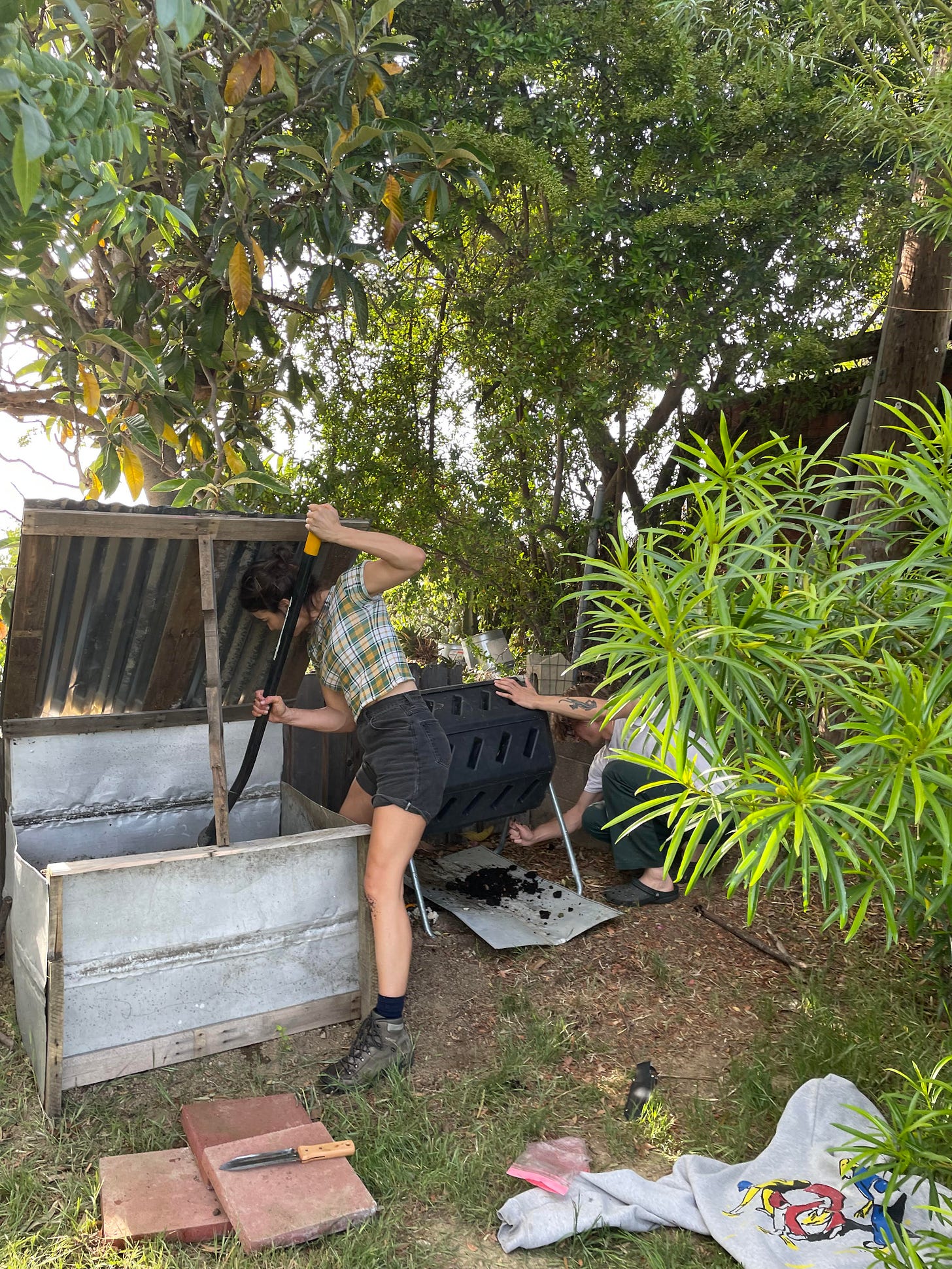Why don't I recommend compost tumblers?
And other important reader questions, along with my curmudgeonly opinions.
Q: Can you share your thoughts / explain why compost tumblers make composting more difficult? Would you consider a house visit to consult on best practices?
—Amanda
A: I don’t know anybody who has good luck with compost tumblers. I get three to four calls a week about compost—people asking me to “fix” their piles—and almost all of them are from people who have compost tumblers. Why don’t they seem to work? Theoretically, they’re great. A seemingly tidy, aesthetically-pleasant compost solution —but all the things that make tumblers appealing to the amateur composter (no smells! no animals! no having to look at it!), are all the reasons, in my opinion, that they fail. In order to make your compost good, you need to be able to get to know it. What do you see? What do you smell? Is the pile crumbly and dry? Is it slimy? These simple and observable features will help you make small adjustments, over time, to what you add and when you turn, so that you can work your way toward an ideal pile. In my experience working with other people’s compost, tumblers often get… simply forgotten. They’re too easy, which becomes psychologically counterproducitve. (“Oh, it just takes a few seconds to turn… so I can do it later…”) They also get overstuffed, leading to compaction, less airflow, and decreased decomposition rates.
In general, any good compost pile needs the correct balance of nitrogen (a little) and carbon (a lot), plus air* and water. Nitrogen comes from things like food scraps, coffee grounds, grass clippings, and animal manure. Carbon comes from woody matter and brown yard waste, like dead leaves or woodchips. Air comes from turning the pile, or incorporating sturdy carbon materials that help break things up. Water comes from rain or, you know, a hose. Keeping these elements in productive ratio to each other is, simply, so much easier when you can just look at the pile directly.
Here are a few other things to look out for, and some suggestions about what you might do to correct them:
Compost that smells like ammonia. This means you have too much nitrogen in your pile. Add more high carbon inputs, like dead leaves or wood chips.
Compost that has formed big, damp clumps. Break it up! Add more nitrogen, to encourage decomposition, and make sure you’re turning the pile frequently.
Compost that smells bad, like rotting garbage. Add more carbon, baby. Add wood chips, dead leaves, sawdust, newspaper, or even soil. Anything to help break up your food scraps.
Compost that is very dry. Simply add water! If you live in a state with a lot of chlorine in your tap water, it can be helpful to let the water sit out for 24-36 hours, first, so that the chlorine evaproates. (Chlorine can have a suppressing effect on microbial communities, I hear.)
I do make house calls (pictured above), and the particular tumbler in question was lacking both oxygen and sufficient nitrogen inputs—resulting in clumpy, slimy compost that had arrested itself in a state of smelly, carbon-heavy, half-decomposition. We emptied the tumbler and moved its contents into a bottomless bin made of corrugated tin. We then added a substantial amount more yard waste, to balance out the food scraps, and “chopped” the whole mixture together using a shovel. Then, we covered the whole shebang with a bag of old soil that had grown moldy after a rainstorm. I’ll check back in a week or so, and see how things are going (and if they still smell so bad).
As a rule, I’m skeptical of any compost solutions that are “pretty” or even remotely expensive. You can build your own bin for, at max, $10 worth of supplies from Home Depot. Cinder blocks, wood slabs, chicken wire, and old trash cans all make excellent compost containers. I’ll talk more about that in future editions. For now: respond with more of your compost questions! I love to talk about decay, and I’m happy to make housecalls.
Love,
Cass
*Some piles are anaerobic (lacking oxygen), I know. But not the ones in your typical suburban backyard. I’ll talk about anaerobic decomposition another time!




compost cassie takes los angeles
Bottomless bin is brilliant! Building one!